
Anders Stenhammar
Members-
Content count
34 -
Joined
-
Last visited
Posts posted by Anders Stenhammar
-
-
Hi Anders, I think the 3/4" lift struts are what is limiting your MTOW. If you could find some 7/8" lift struts, then probably have the higher gross weight. Like they say, a chain is only as strong as it's weakest link. JImChuk
Hi Jim.
Yes but MkIV HH have a gross of 1150lbs-1200lbs and I was hoping that was because of the 7/8" struts and more ribs, different tail feathers, gear and fuselage?
I counted the ribs on mine and there is only 9 ribs, so it seems like it's a standard STOL wing with HH spars?! I am hoping this would result in a MTOW of 1050 instead of 911 or 1150lbs. Bit of course this is only guessing and until I really know, I stick with 911lbs.
-
Hello everyone I am new to the forum. I was woundering if anyone had put a rotax 670ho in a model C heavy hauler?
Yes I have but I haven't had it in the air yet. I am installing the battery in the tail also.
-
Welcome Kekkuli,
I built a custom hybrid 'long heavy hauler speedwing' for my Avid+, hoping to have the best of both worlds. I used and followed the Mk-IV Heavy Hauler material and construction method (see both Leni's .pdf drawings and the wing difference explanation below), however, I substituted the flat-bottom Speedwing ribs instead of the under-cambered Heavy Hauler/STOL ribs. The root rib on Avid Speedwing/Aerobat planes is a special 'transitional' rib that matches up to the butt rib (which was always HH/STOL shaped to allow folding wing clearance). In the attached pictures, you can clearly see the differences between the speed and under-cambered rib profiles both on and off my wing.
Also keep in mind, 'Heavy Hauler' was the name attached to several Avid models. A Heavy Hauler B or C model was 1050lbs M.T.O.W. A Heavy Hauler MkIV was originally 1150lbs and then, to compete with the Kitfox 1200, "re-marketed" as 1200lbs. This is the reason one has to be careful around Avid gross weights and wings. In addition to wing length, material and construction differences, the under-cambered HH rib profile was very different from the flat-bottomed Speed rib profile.
In general, Avid Flyer wing differences extend to spar thickness, spar length, lift strut o.d. diameter, airfoil, rib spacing and drag tubes. All wings called for (2) nose ribs between wing ribs, though an additional nose rib per bay is often added on the Speed and STOL wings due to their wider rib spacing. Here are the basic differences between the (4) Avid Flyer wings explained:
Speedwing: .065" thick 2-1/2" o.d. spars; 108-1/2" spar length; 3/4" dia. lift struts; Avid flat bottom airfoil; (7) ribs ~ 18" o.c.; (3) 1/2" dia. W-2 alum drag tubes; (3) W-3S Short 5/16" dia. alum root rib brace tubes; (1) W-4 Short 1/2" dia. alum root rib brace tube; (1) W-3L Long 5/16" dia. alum tip rib brace tube*; NOTE: Wing tank replaces (1) W-2, (3) W-3S and (1) W-4 alum rib brace tubes at the root end of wing; Key rib dimensions (long rib flaperon hinge) are 35-1/2", 71" and 106-1/2" o.c. from tip ribMk-IV HH: .083" thick 2-1/2" o.d. spars; 144" spar length; 7/8" dia. lift struts; Avid undercamber airfoil; (13) ribs ~ 12" o.c.; (1) 1/2" dia. W-2A steel drag tube; (3) 1/2" dia. W-2 alum drag tubes; (3) W-3S Short 5/16" dia. alum root rib brace tubes; (1) W-4 Short 1/2" dia. alum root rib brace tube; (1) W-3L Long 5/16" dia. alum tip rib brace tube*; NOTE: Wing tank replaces (1) W-2A, (3) W-3S and (1) W-4 alum rib brace tubes at the root end of wing; Key rib dimensions (long rib flaperon hinge) are 35-1/2", 71", 106-1/2" and 142" o.c. from tip ribSTOL: .065" thick 2-1/2" o.d. spars; 144" spar length; 3/4" dia. lift struts; Avid undercamber airfoil; (9) ribs ~ 18" o.c.; (4) 1/2" dia. W-2 alum drag tubes; (3) W-3S Short 5/16" dia. alum root rib brace tubes; (1) W-4 Short 1/2" dia. alum root rib brace tube; (1) W-3L Long 5/16" dia. alum tip rib brace tube*; NOTE: Wing tank replaces (1) W-2, (3) W-3S and (1) W-4 alum rib brace tubes at the root end of wing; Key rib dimensions (long rib flaperon hinge) are 35-1/2", 71", 106-1/2" and 142" o.c. from tip ribMk-IV Aerobat: .083" thick 2-1/2" o.d. spars; 108-1/2" spar length; 7/8" dia. lift struts; Avid flat bottom airfoil; (10) ribs ~ 12" o.c.; (1) 1/2" dia. W-2A steel drag tube; (2) 1/2" dia. W-2 alum drag tubes; (3) W-3S Short 5/16" dia. alum root rib brace tubes; (1) W-4 Short 1/2" dia. alum root rib brace tube; (1) W-3L Long 5/16" dia. alum tip rib brace tube*; NOTE: Wing tank replaces (1) W-2A, (3) W-3S and (1) W-4 alum rib brace tubes at the root end of wing; Key rib dimensions (long rib flaperon hinge) are 35-1/2", 71", and 106-1/2" o.c. from tip rib* Applies to wings with wire trailing edge only, not required with metal trailing edge.Be aware that wings with the exact same descriptors, ie., STOL wings, may have different Gross ratings depending on when they were sold/built. One thing is certain, there were so many combination of fuselages and wing components bought, built, or cobbed together over the years it can be very difficult to determine exactly what Gross you have unless you physically measure spar thickness, tubing diameter, or even cut a tube to verify wall thickness.
With the s/n#, Airdale Sportplane and Supply may be able to provide an accurate factory build manifest at the time of sale but, beware, changes could have easily been made in the years following that impact the original Gross.
Hope that helps. Best of luck with your new Avid, let us know how things are going!
-Doug
HI Doug.
My C-mod STOL has 0.083" spars and 3/4" struts.SN 466. it was built in 1992. Does that mean my MTOW is 1050lbs? Do you know of any documents that can verify this? In my Swedish papers it say MTOW is 911 but I believe that they didn't know that there also was a C HH version.
1 person likes this -
I did some ground running today after replacing the pistons on my new to me RR670. I did this procedure: 2,5min at 2500rpm, then 5min at 4000rpm and then 6min at 5000rpm and about 10 seconds at full power. I got a little high max static rpm (6700rpm) so I will add a little pitch to get it down to 6300rpm. I also discovered that at 4500rpm the rpm was very unstable, is that because of the Rave or maybe because of the low prop loading you think?
Below 2500rpm it is shaking quite more than the 582, is that something I will have to live with? I know I shouldn't let it go below 4000rpm during flight but sometimes I just have to go idle and wing slip to get down because the Avid Flyer is so light with high lift wing.
1 person likes this -
I just started my new Rotax Rick 670 with C-box 3:1 and 3-blade 72" Power fin. I've been running it for 1 hour now and I also think it shakes quite a lot at startup and at idle. I guess I just have to stay above 2500rpm. I will try to turn out the air idle needle.
I would love to have a clutch bit the weight penalty is not ok on my Avid Flyer mod C.
-
-
Soon, I will join the King Kong family :-)
I am installing my 670 right now. Need to modify the firewall a little. The mod C engine cowling is getting butched around the E-box... One day I will do some fiberglass work to fix this.
The biggest concern now is to find a way to hang the muffler in a good way.
1 person likes this -
It's crazy how there are so many different requirements from different countries to get to the same results! Sweden where I live is one of these and often the Swedish authority just accept the modifications developed by other "respected" European countries. The UK did the same job but those mods are not as near as extensive as the Switzerland's mods. Still the UK mods are "UK certified" for the same gross weight. So if I as a Swede would want to get higher gross weight approved I would choose the UK mods to copy.
There are as many different "load calculations" as there are aeronautical engineers !
-
Thanks!
-
-
I am about to buy an RR 670 that has a Kitfox exhaust. I want to install it on my Avid Flyer C but wonder if the exhaust will fit? Anyone have any thoughts about this?
-
Just wondering, how did you rebuild your struts? I am thinking about doing the same with a pair of mine.
-
Hi Japowell.
How is the wing mod going? I am also about to extend my aerobat wing. I got some documents from the British LAA / PFA. Do you have any drawings or instructions for this?
-
-
Ok I will do some W&B and aim for 18" CG. I have noticed that it lands better when I have weight in the cargo.
I remodeled the hat rack today to get more space. I removed the plates and made a sling shelf that goes down just above the flaperon mixer. My dog is much happier with the bigger headroom. Now I need to unhook the ailerons when folding the wings. But with castle nut and a key ring, that's just fine.
1 person likes this -
On my Model B (prior to being totaled in a High Sierra crash) I had both the hanging cargo bag under the turtle deck and the hanging bag just behind my head. Plenty of cargo space.
Now, with my MK4 I have the cargo compartment accessable through the door on the pilot side and the hanging bag from Fischer Upolstery. This is enough to provide space for tent, sleeping pad, stove, tool bag, folding aluminum camp table, food, clothing, etc.
What about the C/G when loading a bunch so far back in the fuselage? What max weight did you fly with in your B model? I have a C model and I am Always goping ower max gross when having passenger and full tank and some cargo. I fly carefully then and not pulling any G and baking not more than 30 degrees in level flight. But it would be nice to hear what others have survived , LoL.
-
Nice work! Like the strut fairings, I am also planning to do them. You said 120moph, thats awsome. I am working on a pair of aerobat wings for my Mod C STOL fuselage and exited to know what I will expect in performance. At what weight do you get 120mph? Is it a Rotax 582 and what max rpm do you get at climb?
-
-
-
Now I have removed the side mount in stainless steel parts and the side radiator cowling to loose more weight and drag. Doing some flight tests and haven't noticed any big difference but I am still happy to loose the weight and the ugly cowling.
Now it's time to sand the fiberglass sheet and paint it. Some day I might do a proper job instead of the riveting.
I also bought a GSC 3 blade 66" prop and are wery happy with it, even though it was a pain to adjust the pitch. I had to use my smartphone with an leveling app that that 0.1 degrees resolution. 0.1 degrees at 24" out from the hub gave me about 200rpm. I set it on 6100 max static rpm and that gave me 6500rpm at climbing. Spark plugs got a light chocolate brown colour.
3 people like this -
So great success! The belly radiator performed really good! Today's flight test had ambient temp at 16C/60F. climbing 1200fpm at 50mph and still only 75C/167F water temp! But, at cruise the temp went down to 60C/140F. I think that the next step would be to install a thermostat.
I am very happy about this. I managed to reduce the empty weight more than 5kg/11lb of radiators, hoses and water. I also got the CG further back.
I noticed a higher cruise and more efficient elevator and lower stall speed! This forum is great!
2 people like this -
So now I have installed the belly radiator and removed the side radiator. I will test it this weekend. The right hose from the engine top has a T connection for the expansion bottle that also has a pressure filler cap on it. If this is not enough cooling I will mount the rotax912 oil cooler parallel with the belly radiator. Hopefully that's not needed.
-
Very nice information. I actually have one of those radiators on the shelf from an other aircraft. I will mount it and see how it goes. Just need to buy some hoses. But does the hoses go straight up to the engine or is there any filler neck cap on the way?
-
So now I have removed the small radiator and the WT is up at 80C at 20C ambient. 2kg lighter at the nose and a better flying aircraft. At climb I reached 90C. I guess next step would be to replace the side radiator with a belly radiator.




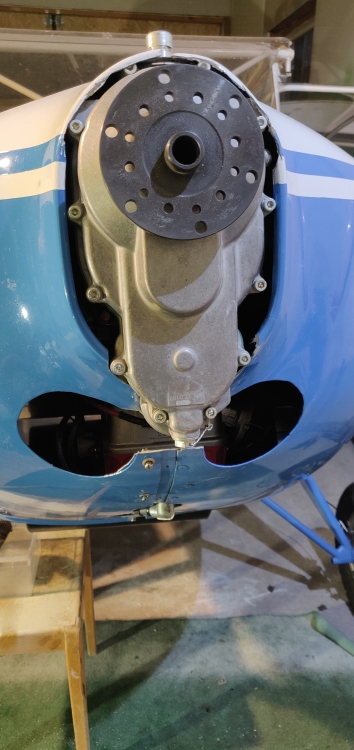

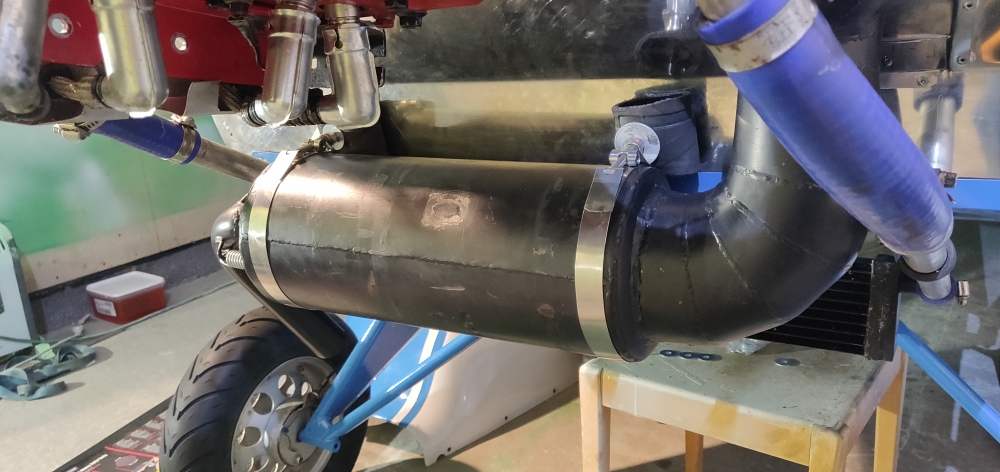
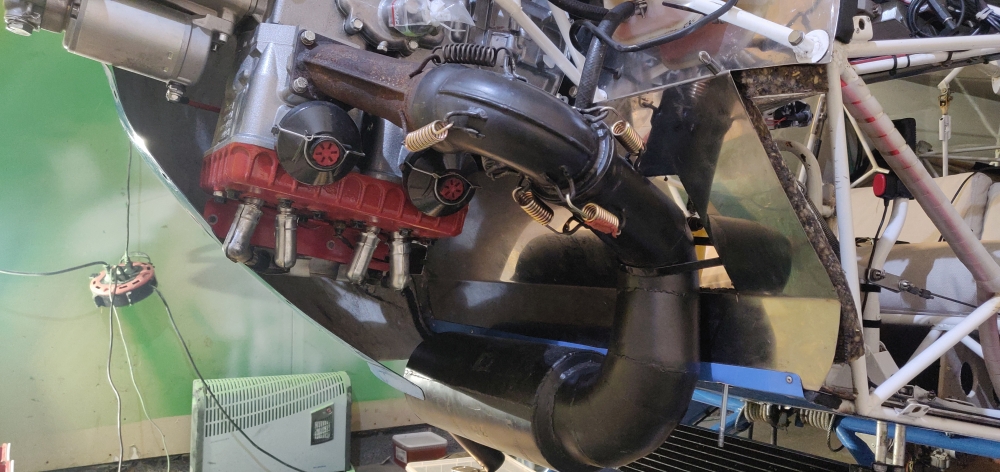

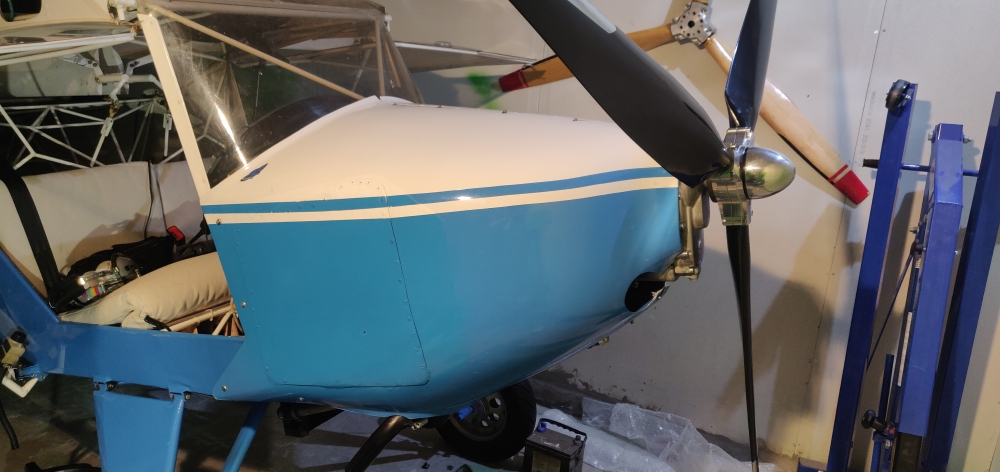
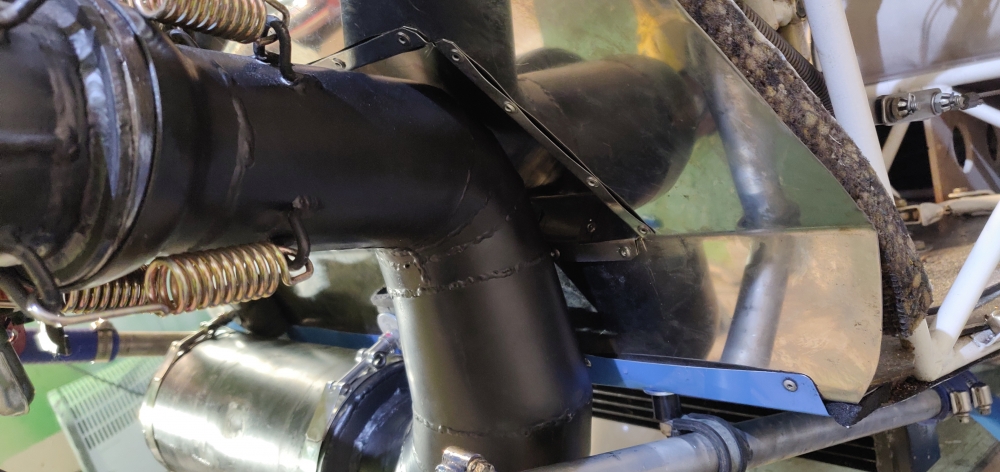

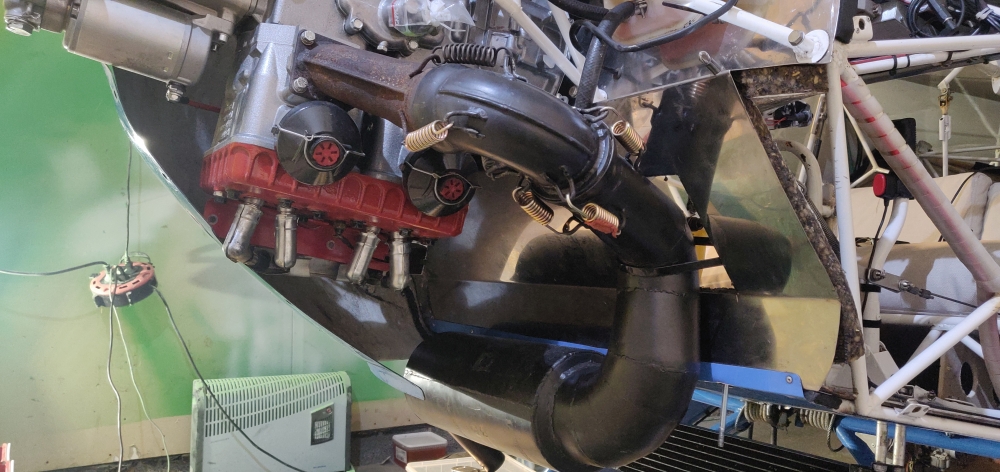


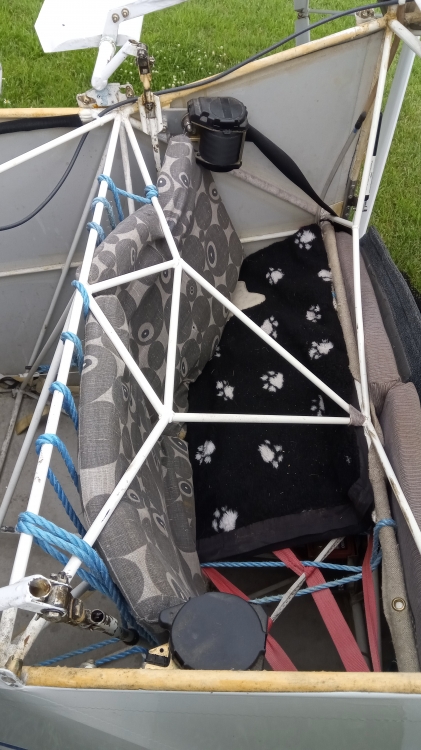
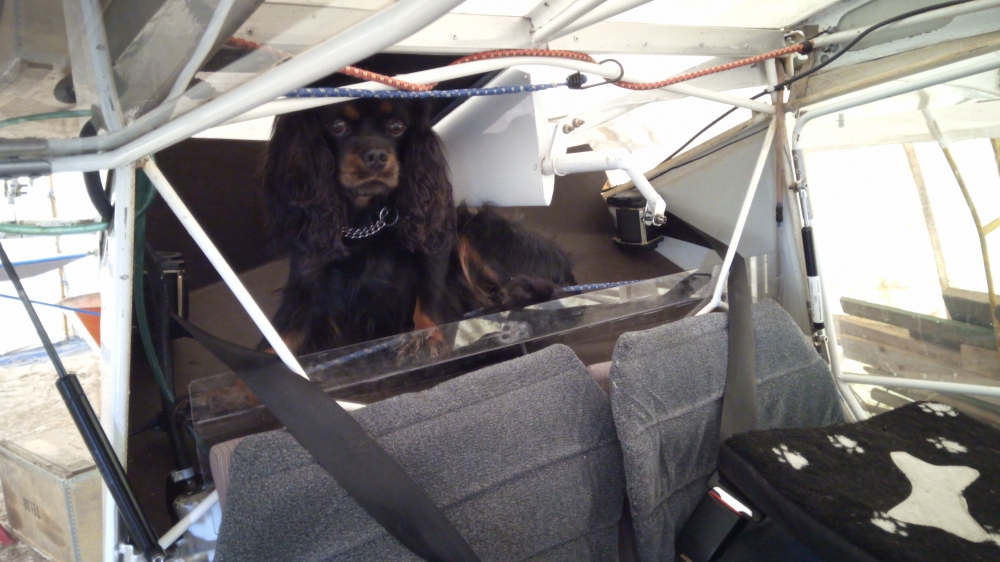


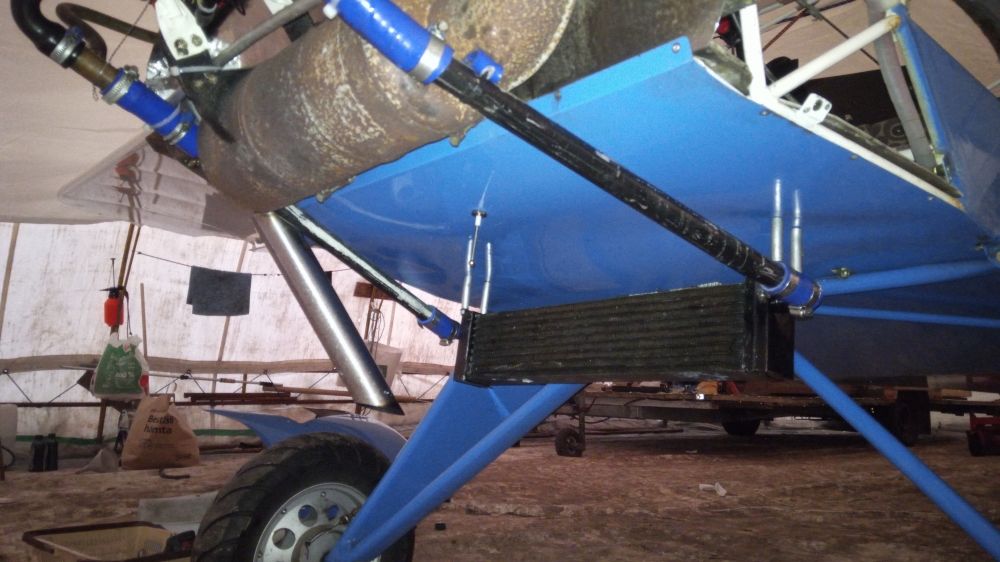
New Rotax 670 Install
in Rotax and other engines
Posted
I used a fuel refilling hose. It's reinforced and very strong. I cut it in 1" pieces, drilled two holes in them and bolted one side to the firewall and one side to the mufflers clamp.